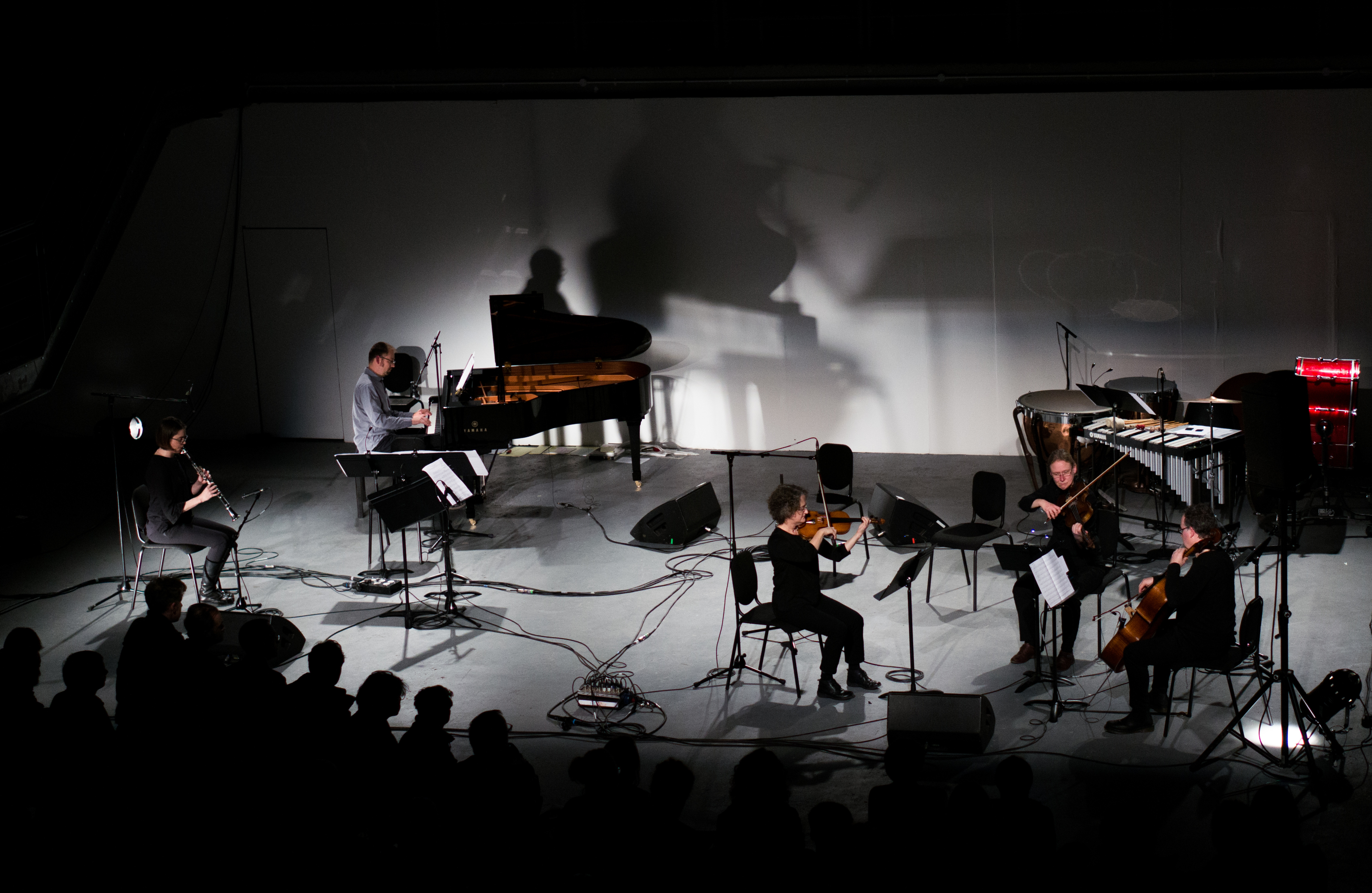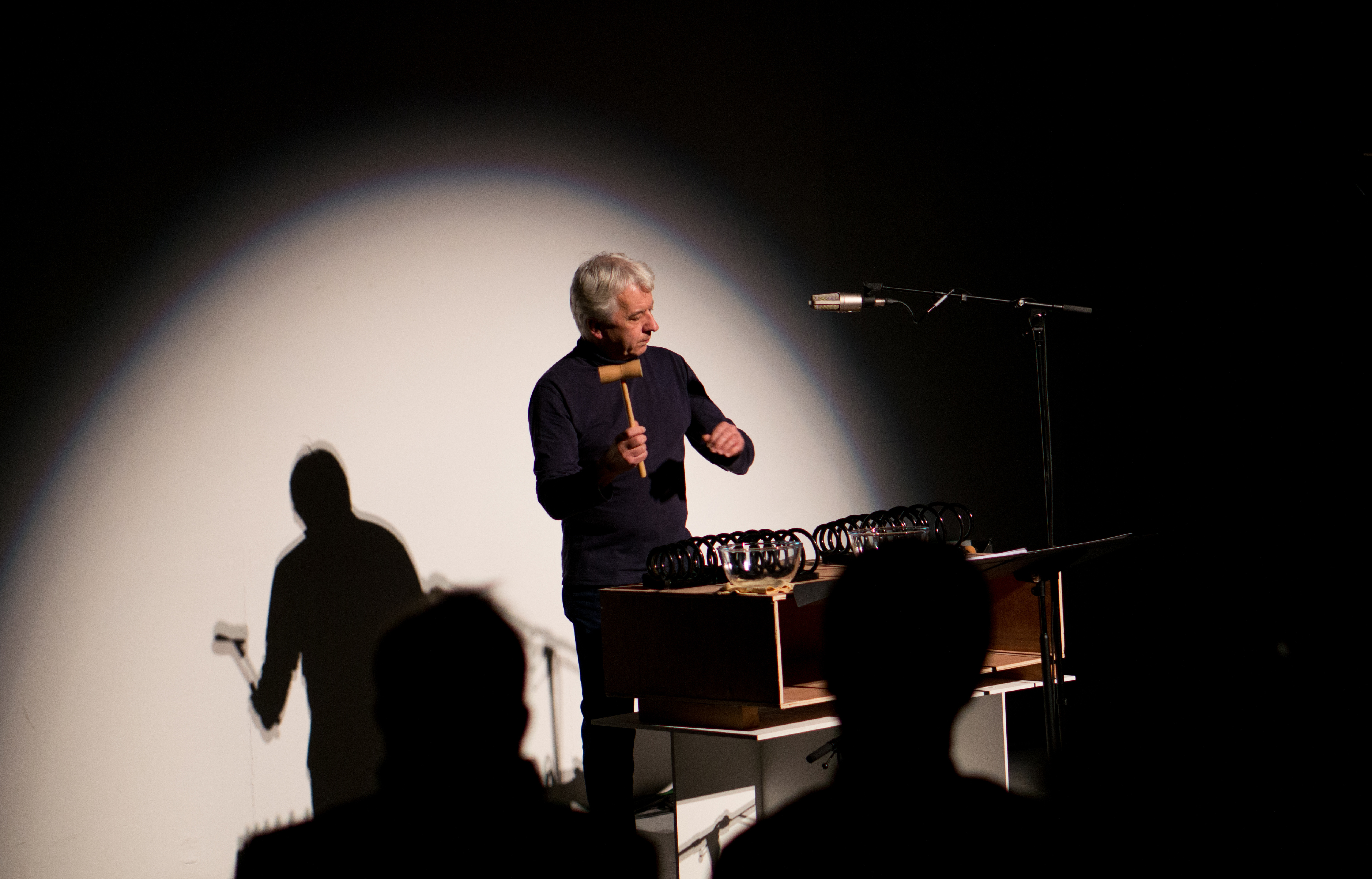



John Oswald Plexure (1993)
Anton Lukoszevieze Dirty Angels (2013)
Pierluigi Billone Mani.DeLeonardis (2004)
Jack Sheen Slow motion romantics vol.II (2017) (world premiere)
Sarah Hughes I Stay Joined (2017) (world premiere)
Galina Ustvolskaya Sonata No. 6 (1988)
Elisabeth S. Clark Book Concerto in One Act (2008)
Yasunao Tone AI Deviation V1 #5, AI Deviation V2 #3 (2017) (UK premiere)
Performers:
Apartment House (Hughes, Sheen, Lukoszevieze):
Philip Thomas (piano), Simon Limbrick (percussion), Letty Stott (French horn), Harry Smith (alto sax), Gavin Morrison (flute), Heather Roche (clarinet), Ruth Ehrlich (violin), Bridget Carey (viola), Anton Lukoszevieze (cello)
An assembly (Clark)
Simon Limbrick (Billone)
Philip Thomas (Ustvolskaya)
Yasunao Tone
Artist Robert Smithson coined the phrase 'ruins in reverse' in his essay A Tour of the Monuments of Passaic, New Jersey to describe the chewed up wastelands of his birthplace. 'I am convinced that the future is lost somewhere in the dumps of the non-historical past,' he wrote. Many composers have thought the same: that the future lies in debris. We explore the importance of ruination in music, celebrating work that builds with rubble, work that constructs using failed sounds. Pieces that, to quote Smithson, 'rise into ruin'.
We begin with a piece by the founder of the Plunderphonics movement, John Oswald's Plexure, which revels in stolen fragments of pop detritus. In Pierluigi Billone's Mani.DeLeonardis, meanwhile, real ruins, four suspension springs from a car, become Simon Limbrick's otherworldly instruments, and the site of an extraordinary musical fantasy.
The heart of the night are three works performed by Apartment House: new commissions from artist Sarah Hughes and composer/conductor Jack Sheen and Dirty Angels, a piece by the ensemble's founder Anton Lukoszevieze that's constantly unravelling, the sound scattering, evaporating.
New ensemble An assembly subjects Smithson himself to the principle of demolition in Elisabeth S. Clark's Book Concerto, transforming Smithson's essays into sound sculptures through a massed reading. Before our final descent into electronic disintegration, Philip Thomas performs the notorious Sixth Sonata by Galina Ustvolskaya, a work that seems determined to consign the instrument itself to the scrapheap.
We end with a performance from one of the pioneers of glitch, Yasunao Tone, who presents two iterations of his labyrinthine new project, AI Deviation V1 and V2. The work builds on his work disrupting the MP3. Collaborating with Professor Tony Myatt of the University of Surrey, and a team of researchers including Paul Modler and Mark Fell, Tone trained computers to simulate his performances in which he uses MP3 deviation software. Working with these AI versions of himself, Tone will be 'deviating and corrupting the technologies designed to simulate his own performances' while also 'deviating and interacting live with AI versions of himself as performer.'